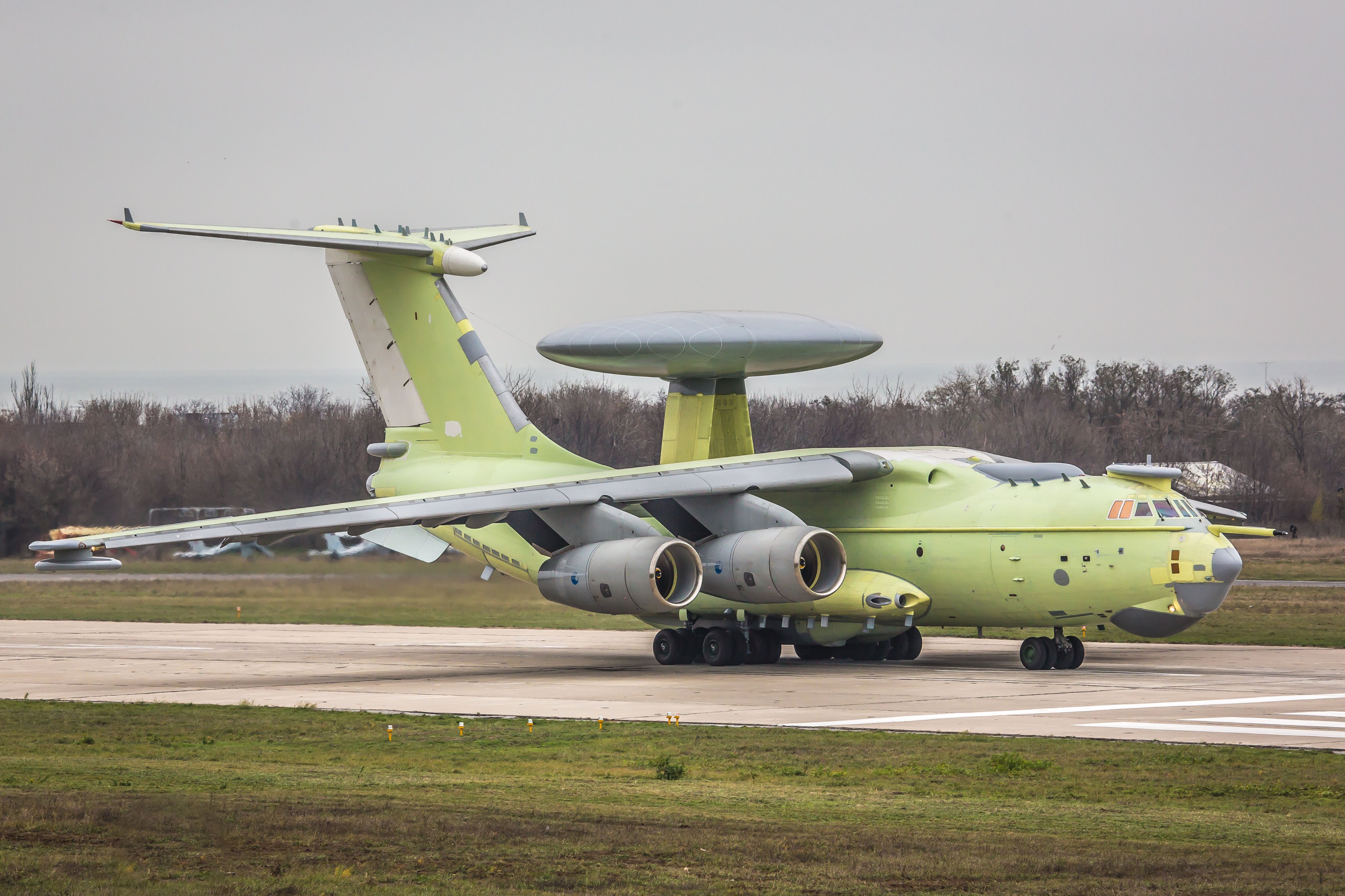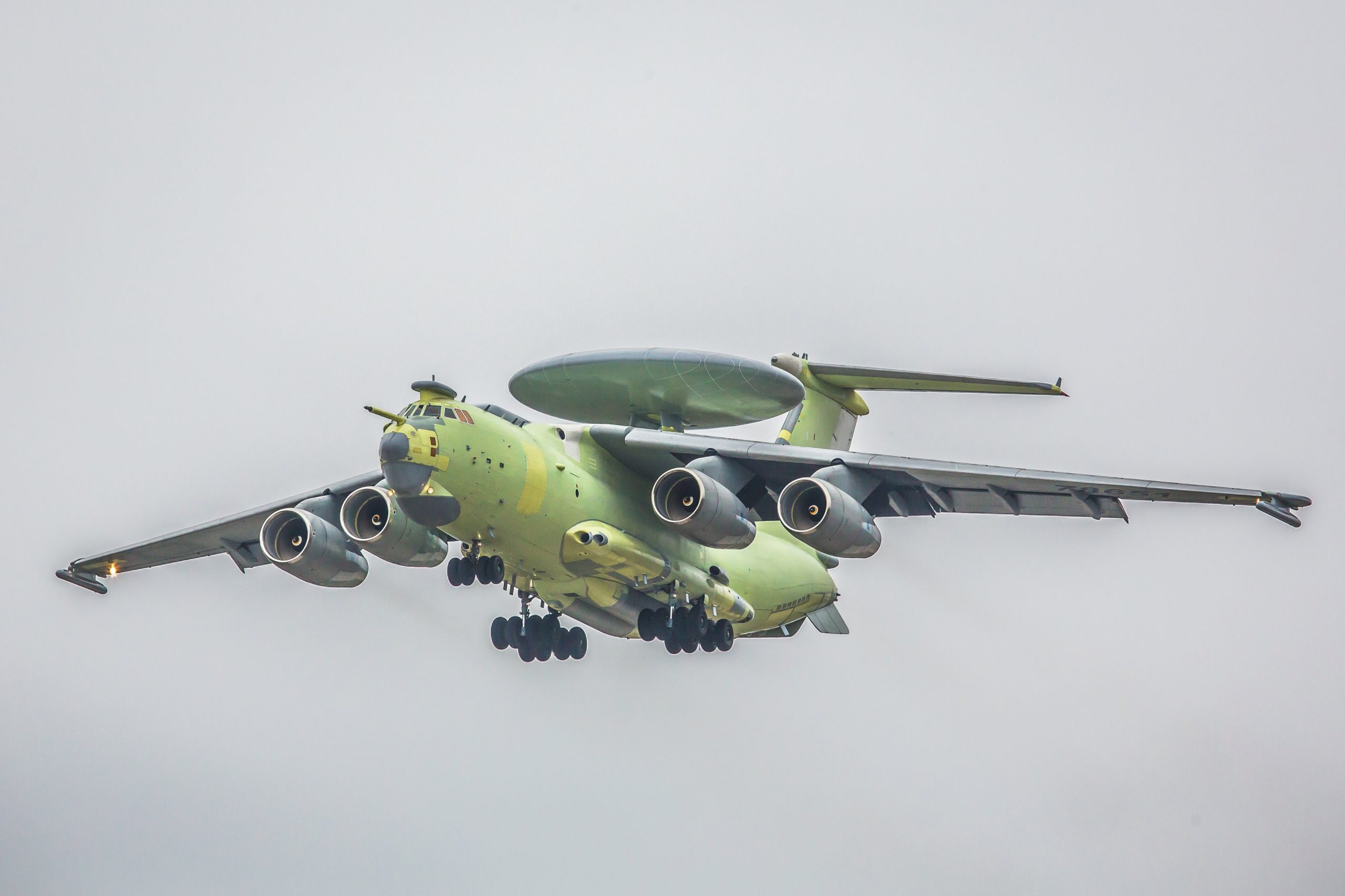The Russian A-100 ‘Premier’ Airborne Early Warning and Control System (AWACS) plane performed its debut flight with its radar system switched on, reported Tass.
‘Impossible To Intercept’, 2nd Regiment Of Russia’s Avangard Hypersonic Missiles Set To Enter Combat Duty
The test flight was announced on February 10 by the state-owned Rostec corporation. The A-100, also called the “flying radar”, took to the skies from aircraft manufacturer Beriev’s Taganrog plant in southwestern Russia.
The next-generation long-range radar surveillance and control aircraft, a modified Ilyushin Il-76MD-90A airlifter, was upgraded by Beriev. The radar and other mission systems were delivered by Russia’s Vega Group.
“Specialists of the Vega Group within the Ruselectronics Holding and the Beriev Aircraft Company, integrated into the United Aircraft Corporation (both are parts of the Rostec state corporation), conducted the first flight of the A-100 long-range radar surveillance and control platform with its onboard radio-technical system switched on,” according to an official press release.

The tests proved that specific equipment and the aircraft’s onboard systems functioned normally in the presence of intense electromagnetic radiation. “The flight proceeded in the normal mode. All the systems and equipment operated smoothly,” Sergey Parkhayev, the commander of the aircraft during the test flight, said in a statement.
“The crew accomplished the flight assignment in full, checking the aircraft’s stable and controlled operation in the designated modes of piloting and the performance of the equipment mounted on the airplane. The Il-76MD-90A platform confirmed its designed characteristics,” he added.
Western Sanctions Causing Delays?
The announcement comes days after a Russian publication, Voyenno-Promyshlenny Kuryer, stated that Western restrictions on the country were delaying the development of this plane.
The program’s tardiness has been blamed on delays in the delivery of electrical components for the aircraft, notably microchips, as a result of sanctions imposed on Russia by the European Union, the United States, and individual countries in recent years.
“Electronics, like much aside, have come under Western sanctions, which have hurt the Premier project,” the report states. Simultaneously, Russian efforts to replace foreign-made microchips used in the A-100 “have encountered problems”.

Prior to the imposition of sanctions on Russia, the Voyenno-Promyshlenny Kuryer underlines a “strategic mistake” in the early development of the A-100. The sanctions were implemented as a result of Russia’s 2014 annexation of Crimea from Ukraine.
Further sanctions were placed in the aftermath of the poisoning of former spy Sergei Skripal and his daughter in the United Kingdom in 2018, as well as accusations of Russian intervention in the 2016 US election, which allegedly helped to elect Donald Trump.
Pilotless Fighters Jets: AI-Powered US Air Force Warplanes Are Being Trained For Live Dogfights
But analysts say economic security considerations had no impact on the sourcing of foreign components because the A-100 program began before the imposition of these sanctions. The Russian Ministry of Defense seems to be ultimately accountable for this decision, despite the fact that it is not indicated in the report.
The A-100 AEW&C plane flew for the first time in 2017. According to media reports, the aircraft’s avionics and radio engineering complex were tested during the flight. The A-100’s development timeframe, which began in the early 2000s, has slipped behind schedule on several occasions.
The #Beriev A-100 AWACS aircraft performed its maiden flight pic.twitter.com/eEcpMrLXL2
— UAC Russia (@UAC_Russia_eng) November 20, 2017
The first flight was intended to take place in 2015, but it was postponed until 2016, and then again to 2017 after the Il-76MD-90A was chosen as the carrier. The plane was meant to be completed by 2020, but it has now been postponed for another four years.
Finally, Russia’s over-reliance on western electrical components in the A-100 program represents a greater malaise in the country, which continues to fall behind in this field. In terms of these technologies, Russia is at least 10 years behind the West, according to Voyenno-Promyshlenny Kuryer. This is a remnant from the Cold War, when Western economic sanctions barred the transfer of high-tech goods to the Soviet Union.
A-100 Premier Aircraft
The A-100 is a twin-engine airborne early warning and control (AEW&C) aircraft based on Ilyushin Aviation Complex’s Il-76MD-90A (Il-476) military transport aircraft and produced by Aviastar-SP.
The new aircraft will be used by the Russian Air Force for long-range surveillance and detection of airborne, land-based, and sea-based targets. In air-to-air or air-to-ground attack operations, it can also provide fighter and attack aircraft with airborne intelligence, surveillance, reconnaissance, and command and control.
Due to its distinctive spinning radar dome above the fuselage, the A-100 is already known as “the flying mushroom.” The Vega Premier 476 dual-range, multi-position, panoramic active electronically scanned array (AESA) radar and two rotating phased array antennae are housed in a circular radar dome positioned on two struts above the fuselage.
Phased array radars can do both mechanical bearing scanning and active electronic vertical phase scanning to provide a wider coverage angle. The radar beam’s elevation angle is electronically controlled, while the azimuth angle is physically regulated by rotating the dome.
With a five-second rotation time, the AESA array improves the radar’s ability to follow fast-moving targets.
The aircraft’s panoramic surveillance radars and cutting-edge computer systems will help identify, detect, and acquire airborne targets in three axes at a range of 600 kilometers, as well as surface targets at a range of 400 kilometers.
A friend or foe identification (IFF), radio transmission equipment and a digital computer are all part of the airborne radar warning and guidance system. Target data is delivered to missile command stations over a command radio link to guide anti-aircraft missiles.
The plane’s avionics system can collect, mark, and track stationary and moving targets in both automated and manual modes for increased flying safety. Cutting-edge laser gyroscopes and quartz accelerometers are used to determine the aircraft’s position.
To protect itself from enemy weapons, the A-100 aircraft is equipped with electronic intelligence (ELINT) and electronic warfare (EW) technology.
Two modern PS-90A-76 engines, each with a thrust of 3,500kgf, power the A-100 AEW&C aircraft. The engine improves maneuverability while lowering operating costs over the Il-76MD-90A aircraft. The flight time of the aircraft is around 260 minutes.
- Contact the author at ashishmichel@gmail.com
- Follow EurAsian Times on Google News




